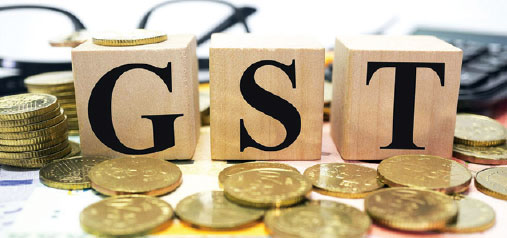AUGUST 8, 2016, the day when GST Constitution Amendment (122nd Amendment) Bill was passed by the Lok Sabha (with amendments made during the discussion in Rajya Sabha) with a majority of 423:00, is heralded as the most important day in the history of tax reforms in the country after 1991 when the economy was liberalised.
The Prime Minister, who intervened in the Lok Sabha debate, described the event as a major step towards ‘freeing India from tax terrorism”. He further said: “Ek Bharat, Shreshta Bharat is the dream of all us. When we look at railways, post offices, All India Services, we get the feel of one India, now digital India, sagarmala…all these make us aware of one India, they strengthen that spirit. GST is the new pearl that we are adding to this necklace; this strengthens the spirit of India.” He further observed: “Rashtra niti has triumphed over rajniti”—well said as far as the strength and significance of the proposed law is concerned. Even from other fora too, there have been eloquent praise. It has been said that this tax, when enacted, will lead to one tax, one market, one nation, lower the rate of tax because of avoidance of cascading impact, improve logistics, lead to simplified tax structure, subsuming nearly 17 Central and State taxes into one single tax, investment would get a boost via cheaper capital goods, manufacturing will become competitive, tax revenues will increase because of check on tax evasion, wider tax base will ensure lower costs in tax collections, better compliance would follow, there would be protection from cheaper imports, transparency in working, input tax credits will reduce burden of tax and incentivise suppliers to pay tax with a smile and greater freedom in business would be ensured because of online trading. GST would provide impetus to ‘Make in India’ campaign and ease in doing business and many other such benefits will follow. Regretfully, such (proclaimed) benefits are not based on India’s GST’s working but on the experience of implementation of such tax in nearly 160 countries and some of these are merely presumptuous. The Indian law has cleared only the first hurdle of allowing Parliament and States to legislate on GST. Even this process is not complete as the GST Constitution Amendment Bill, as passed by both the Houses of Parliament, has to be ratified by minimum of 16 State Legislatures and thereafter, the same has to be assented to by the President.
The process will not end there. Many more exercises will be required to be carried out. These are:
• The first task, after the President’s assent to the Bill, is the formation of GST Council by the President because other tasks regarding drafting of GST Bills, fixing of rates, constituting of Dispute Resolution Panel, etc., can be taken up by the GSTC only.
• The Central and State governments will have to frame their GST laws and get these passed by their legislatures after following the laid-down procedures.
• Each government will have to frame ‘Rules’ to the respective Acts.
• Each government will have to design and create requisite infrastructural software for implementation of respective laws. The infrastructure so created will need to be tested and changed if found deficient.
• Officers of respective governments will have to be trained so as to take up the responsibilities under the new dispensation.
• Trade and business people will have to be sensitised to adopt the new tax.
The tasks to be carried would be immense, including varied exercises by the GST Council (GSTC). The administrative mechanism to implement the Act could be planned only after there is clarity in respect of law and procedures.
Determination of tax rate
‘One rate’ slogan sounds well but may have to wait for some time till the Centre and States get acclimatised to new laws and nationwide consensus is reached on this. This would need educating the taxpayers and make them favourably inclined towards the new tax regime by highlighting the various beneficial aspects of the GST and motivate them to move towards a unified rate. GSTC has to play a vital role in this by determining a rate which could be widely acceptable. States would like to have higher rates, but they have to be convinced that high rate cannot be a solution to tide over financial problems—rather the same can be inflationary. GSTC, for arriving at mutually acceptable rate, can get experts hired for working out such a rate. The States can be told about the availability of input credits and persuaded to arrive at a medium rate. Till then, the Arvind Subramaniam’s suggestions for three-tier rate of 12 per cent for essential (merit) goods, 17-18 per cent standard rate and 40 per cent on luxury (sin) goods can be adopted for the Centre and States. These would be in addition to the zero rate on 54 items in CPI. Ultimately, a single rate of 16 per cent or 16.5 per cent can be fixed. The rate in advanced economies is near about 16.5-17 per cent. Even in Chanakya’s Arthshastra, providing for several taxes, the average rate works out to nearly 16.40 per cent.
THE next aspect needing consideration, concerns exemptions. The new law should not be burdened with large number of exemptions. Doing so, besides bringing down the tax collection, will make the law complicated, bring distortions in the system, leading to pushing up of the tax rate. The GSTC needs to be very careful in suggesting exemptions in the law.
The most important task concerning the GST law is constitution of GSTC, around which the working of GST law has to evolve. Its functioning could lead to bottlenecks as this will be a jumbo body comprising of FM (as Chairman), MOS, Finance, and FMs of various States or their nominees, with different backgrounds, ideologies and views as members. There is a suggestion that an opposition member may be the Vice-Chairman of the GSTC. Arriving at a consensus in the meetings of GSTC could be an onerous exercise. Already, AIDMK representative walked out of Lok Sabha and Rajya Sabha at the time of voting on the amendment bill on the ground that the GST is an intrusion on the sovereignty of the State despite FM’s declaration of “pooled sovereignty” in the administration of GST law.
Another problem would be relating to training of bureaucracy, who will be administering the law, and changing the mindset of those who will be subject to such law. The exercise for this can start immediately after the GST Act is passed (the SGST are expected to be on the same pattern). Training modules for the officers and staff administering the laws can be arranged at the National Training Academies of Direct and Indirect Taxes and their regional bodies in various States. The taxpayers can be made aware of the new laws by holding meetings in different chambers of commerce, trade and business associations in various States.
A note of caution may also be sounded regarding GST. Five governments (including that of Canada) fell in the elections following the introduction of GST legislation. But, in quite a few countries, it has sailed through successfully. The deadline of April 1, 2017, is unlikely to be met. By optimistic estimates, it could be said to commence from April 1, 2018. Then, it will bounce off to an election year. Whether the government would be interested in such a time-frame could be moot issue.
Passing of GST Constitutional Amendment Bill is a big bang reform, which will help Centre and States trade freely with each other like WTO countries. The objective behind this tax is to dismantle fiscal barriers between States and create a common market in the country. How far its objectives would be achieved will depend on how the GST laws and rules are framed and on the wisdom and desire to advance country’s business, trade, commerce and share in the international markets on the part of those who would be members of the GSTC. They will have to rise above regional issues in the interest of the nation.
The writer is former Chairman, CBDT





























































